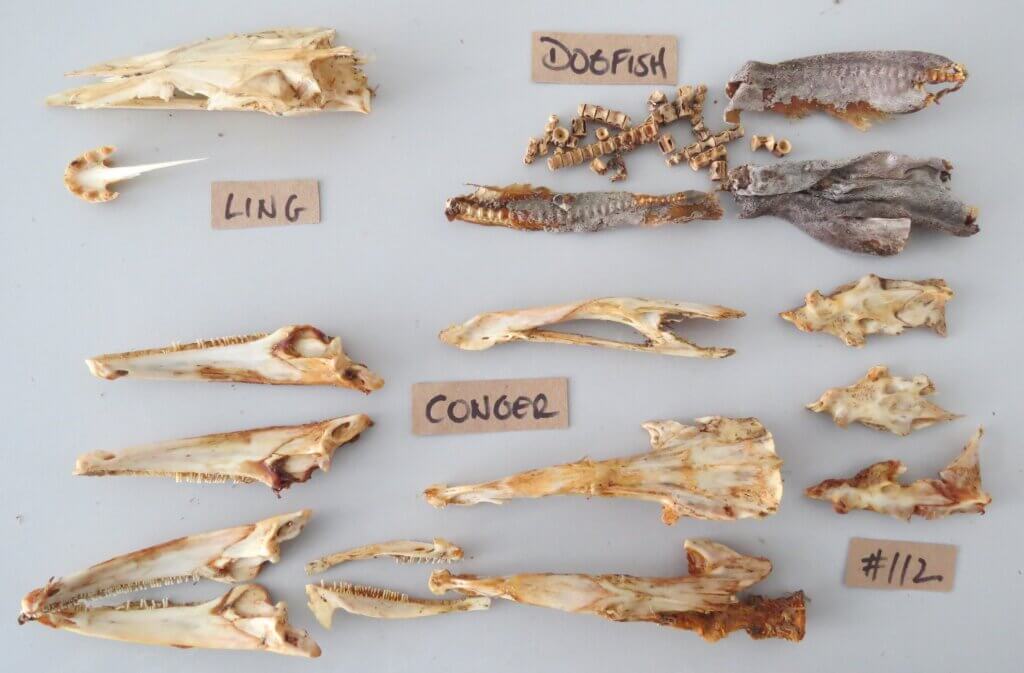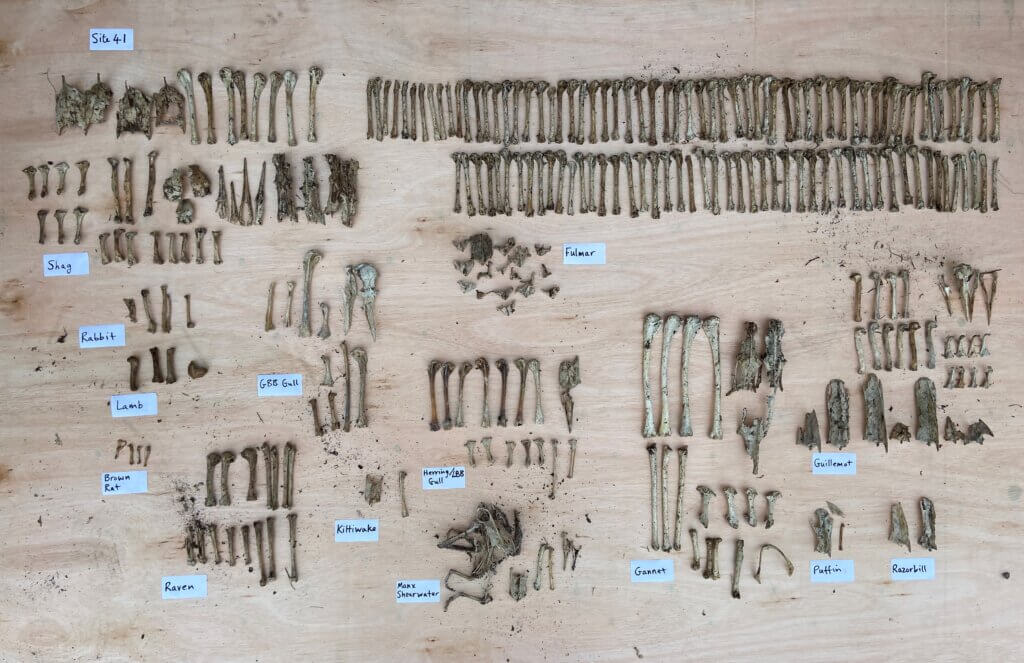Lambs not a major food source for breeding White-tailed Eagles in Scotland
New study finds proportion of nests with evidence of lamb as prey declines over 20-year period
A new study assessing the diet of breeding White-tailed Eagles (Haliaeetus albicilla) – also known as Sea Eagles – in Scotland between 1998 and 2017 has found that marine prey of seabirds and fish is the most important food source for them, whilst the occurrence of lamb in their food has decreased as more pairs have established.
Analysis of food remains shows an incredibly diverse diet during the breeding season; 11,375 different food items were recorded in 293 samples from nest sites in 92 White-tailed Eagle territories across Scotland and 121 species were recorded with 70 species of bird, 17 species of mammals and at least 30 species of fish.



The study, published as a peer reviewed paper “The breeding season diet of White-tailed Eagles in Scotland” in the Scottish Ornithologists’ Club journal Scottish Birds, began in 1998 when there were only 18 pairs of White-tailed Eagles in Scotland, mostly in the Inner Hebrides. By 2017 there were at least 122 pairs across the country, and 58 nests were sampled in that year.
The analysis showed that in that time the proportion of lamb remains in nests have decreased; at the start of the study period between 1998 and 2002, 15 nests were sampled and lambs accounted for more than 30% of items in five of those nests [ie in 33% of nests]. However, as the White-tailed Eagle population expanded, pairs establishing in new territories tended to feed on fewer lambs, so by the end of the study in 2017 lambs accounted for 30% or more of items at five of 58 nests sampled [ie in only c9% of nests]. Note – brackets in bold added by Mark Avery for clarification
White-tailed Eagles are major scavengers, with inexperienced birds from the first round of releases in the 1970s and 1980s attracted to areas where dead sheep or lambs were readily available. A previous study found that lambs tended to be scavenged when already dead and as carrion. That study also indicated that on occasion live lambs were killed, however that these lambs taken were often smaller than average so more vulnerable to predation.
Despite many hours of field observations in other monitoring of White-tailed Eagles the scale of live lamb predation has proved very hard to quantify. Following the original settlement pattern on the islands of Mull and Skye in particular subsequent generations began breeding in areas where natural live prey was more readily available, with a shift in diet as a result. In its conclusion the paper states that “the previously widespread view that lambs are an important food for White-tailed Eagles has been superseded; the prevailing evidence now is that marine items (seabirds and fishes) are the most important breeding season food in Scotland.”
The most common species found in nests is now Fulmar – 30% of items per nest – with lamb now only accounting for 6% on average. As this study was based on prey remains, fish, young birds and smaller items are likely to be under-represented in it as these remains are more easily digested or decomposed. The result is that this study will have over-estimated the importance of large mammals and birds in the diet.
The study also recorded differences in diet based on the geographical location of the nests, supporting previous studies that show White-tailed Eagles are generalist foragers – taking a wide range of prey types – and able to adapt their diet to what is readily available locally. At coastal territories seabirds and fish made up most of the food remains. At nests in territories further in inland foods such as wetland birds and rabbits dominated. The study authors note that as White-tailed Eagles continue to recolonise historic territories away from the coast species such as Mountain Hare and freshwater fish are likely to become important food sources.
The paper is an important contribution to the growing body of knowledge about the diet of these birds with robust field data and analysis vital in feeding into policy and management, such as the Sea Eagle Management Scheme (SEMS) promoted by NatureScot to support farmers and crofters in areas where White-tailed Eagles are present. The SEMS is due to be reviewed and updated in 2024.
The paper authors highlight that as the study method focused on nests where breeding was successful, future studies using tracking devices on eagles to monitor foraging behaviour and identify feeding perches will be needed to help identify food remains of juvenile or immature birds, and adult birds outside the breeding season.
Robin Reid, one of the paper authors said: “This publication has been made possible through collaboration between many researchers and fieldworkers and with support from several organisations. As a result, the findings are based on large and robust dataset with prey remains collected from the majority of White-tailed Eagle territories occupied in Scotland during the study period. It has been fascinating to see how the diet varies between individual territories and across regions. The wide range of prey items recorded demonstrates that the White-tailed Eagle is an opportunistic and adaptable predator and scavenger, consistent with findings from studies elsewhere across the species range in Europe.”
Eilidh McNab, Development Officer for the Scottish Ornithologists’ Club who published the paper said: “The SOC is delighted to support the publication of important research in Scottish ornithology through our quarterly journal, Scottish Birds. It is fantastic to see the return of such charismatic and iconic species as White-tailed Eagles to Scottish skies, and it is heartening that the population is expanding into areas where they have not been seen in over a century. This paper offers a fascinating insight into the diet of our largest bird of prey, and greatly adds to the knowledge base of their feeding behaviours in Scotland.”
Duncan Orr-Ewing, Head of Species and Land Management at RSPB Scotland and member of the National Sea Eagle Stakeholder Group said; “This study will be invaluable for an evidence-based approach when drawing up the next Sea Eagle Management Scheme and targeting of available resources to geographical areas where support is most needed. We also hope that the results of this study will provide some reassurance to famers and crofters in connection with their concerns about livestock predation and when noting the largely natural diet of most breeding White-tailed Eagles in Scotland.”
Ends
[registration_form]
Sadly, we know that many raptor haters are more or less impervious to scientific evidence.
But farmers have told me they swoop down and take full grown sheep. One told me that he was coming out the pub, and a pink eagle swooped down and carried himself away, before dumping him in his car and forcing him to drive it while stuffing a bottle of whyte and mackay down his throat, just in front of a police car. Those wily sea eagles.